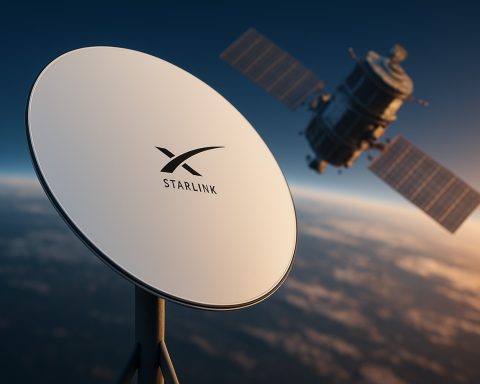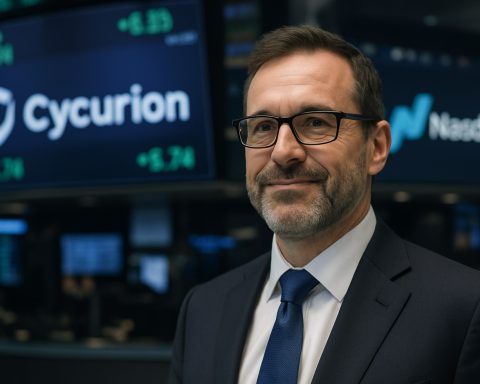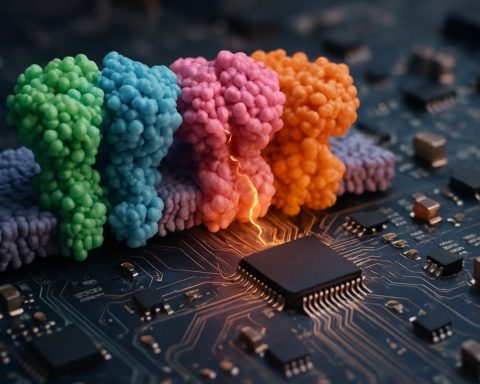- D-Wave continues to establish its role in the quantum computing landscape with its Advantage quantum system, which boasts 5,000 qubits.
- The Jülich Supercomputing Centre (JSC) in Germany is the first to purchase the D-Wave Advantage system for in-house use, beyond cloud-based access, enhancing its research capacity.
- Integrating this system with its upcoming exascale supercomputer, “Jupiter,” positions JSC for groundbreaking research in various fields like protein folding and particle physics.
- D-Wave’s Quantum Uplift Program offers incentives for organizations to adopt its annealing technology over more unreliable gate-model quantum computers.
- The move signifies a shift towards prioritizing accessible, practical quantum solutions that prioritize function and speed.
In the relentless race toward quantum supremacy, where giants like Google and IBM boast game-changing advances, D-Wave has been carving out its niche, quietly building bridges between the now and the future. This week, amid the hum of quantum excitement, a thunderous announcement emerged: the Jülich Supercomputing Centre (JSC) in Germany has become the first high-performance computing institution to purchase D-Wave’s Advantage quantum system, a technological Goliath boasting 5,000 qubits.
This strategic purchase—the first of its kind outside the cloud—marks a significant shift. JSC has ventured beyond cloud-based access, opting to harness the full power and flexibility of an in-house system. Nestled within the Jülich Unified Infrastructure for Quantum Computing, this system offers unfettered access to its parameters, promising a leap in research capabilities. Imagine an architect finally holding blueprints to craft skyscrapers rather than only envisioning them on a sketch pad.
By integrating the Advantage system with its soon-to-be exascale supercomputer, “Jupiter,” JSC is primed for pioneering research, from deciphering protein folding to unraveling the mysterious ballet of particles at the universe’s dawn.
D-Wave’s Quantum Uplift Program further galvanizes this momentum. As some organizations find gate-model quantum computers unreliable, D-Wave offers a lifeline, enticing them with incentives to switch to its proven annealing technology.
Here’s the takeaway: D-Wave demonstrates that being the first and the fastest matters. The burgeoning interest in its systems underscores a growing recognition that, when it comes to practical quantum solutions, fast tracks paved with function may trump potential. As D-Wave progresses, the landscape of quantum computing reshapes, offering new paths to the future of problem-solving.
This Quantum Leap Could Transform Computing As We Know It!
Key Insights into D-Wave’s Quantum Computing Milestone
D-Wave’s recent collaboration with the Jülich Supercomputing Centre (JSC) marks a significant step forward in the practical application of quantum computing. Understanding how this development fits into the broader landscape of quantum advancements is crucial for appreciating its implications.
How D-Wave’s Advantage Quantum System Works
Quantum Annealers:
D-Wave employs quantum annealing, which differs from gate-model quantum computers (used by IBM and Google). It focuses on solving optimization problems by finding the lowest energy state in a system—ideal for logistics, financial modeling, and machine learning.
In-House System Advantage:
By installing the Advantage system at JSC, researchers gain complete access to the machine, allowing them to manipulate its parameters and integrate their solutions more deeply into ongoing projects.
Real-World Use Cases
1. Drug Discovery and Biomedical Research:
– Quantum computing holds potential for optimizing molecules and proteins, potentially speeding up drug discovery processes significantly.
– Researchers at JSC aim to apply the system to protein folding challenges, which could unveil new frontiers in medicine.
2. Supply Chain Optimization:
– Businesses can leverage quantum solutions to manage logistics, enhancing efficiency and cutting operational costs.
3. Financial Services:
– Quantum systems can manage and analyze vast datasets for financial modeling, offering deeper insights and faster simulations than classical computers.
Market Forecasts & Industry Trends
1. Market Growth:
– The global quantum computing market is projected to grow from $472 million in 2021 to over $1.7 billion by 2026, reflecting the increasing adoption of quantum technologies across sectors (Source: MarketsandMarkets).
2. Emerging Ecosystem:
– As more institutions integrate quantum solutions, partnerships akin to D-Wave and JSC’s could become collaborations model for high-tech industries.
Pros & Cons Overview
Pros:
– Increased Speed: Quantum systems can solve complex problems faster than classical computers, yielding new insights quickly.
– Versatility: Supports a variety of applications from logistics to pharmaceuticals.
– Research Capability: Direct in-house access allows for remote-free research innovation.
Cons:
– Complexity: Requires specialized knowledge to operate and interpret results.
– Scalability: Quantum systems currently have limitations concerning qubit coherence and error correction.
Tutorials & Compatibility
To maximize the Advantage system’s potential, researchers should focus on compatible programming models, such as D-Wave’s Quantum Development Kit (QDK), which includes interfaces for Python and integration with classical systems for seamless operation.
Actionable Recommendations
– Educate Your Team: Invest in training staff to understand quantum computing fundamentals and quantum annealing benefits.
– Explore Collaborative Opportunities: Institutions should consider partnerships with quantum computing firms to leverage emerging technologies.
– Start Small: Utilize hybrid computing strategies combining classical and quantum computing to address real-world problems incrementally.
For more information on cutting-edge technologies, visit D-Wave Systems.
—
This milestone demonstrates burgeoning interest and application advancements in the quantum realm, highlighting the importance of understanding both the technologies and their implications across industries.










